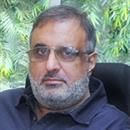Quality, compliance have replaced price in sourcing
Founded in 1998, United Arab Emirates-based Texlynx is one of the largest buying houses globally. The team at the company understands countries' culture, purchasing practices, mill capabilities, logistics and the quality assurance methodology adapted by manufacturers to help businesses source successfully. It has regional offices in Pakistan, India, Italy, Spain, Bahrain and Bangladesh. Imran Lateef, CEO, Texlynx talks about factors impacting sourcing trends globally in an interview with Fibre2Fashion.
Ethical sourcing and sustainability issues are more important in the textile supply chain now more than ever. How has this changed sourcing?
It has forced businessmen to invest in human resources, systems and compliances that are good for everyone involved.
How do you make sure sustainable sourcing practices are maintained? What percentage of vendors or companies you are associated with stick to sustainable practices?
We are very careful in choosing our partners. Either we do not work with those who do not qualify or we give them a deadline to fix and get back to us.
What kind of trade agreements can help India boost its textile exports?
A level playing field in all respect can help India.
How has textile sourcing evolved from what it was 8-10 years back?
It is organised, compliant and system-oriented. Quality and compliance have become major points today instead of price.
Which three major international political factors currently have a major impact on textile sourcing?
The US and European economy, cost of doing business due to changed environment and rebate structures are the three major international political factors influencing textile sourcing.
How does collaboration with your vendors work? How many vendors and from which geographies do you work with?
It is still a personality- and relationship-based business. So it depends on who is dealing with whom and where. There is no standard formula for that.
From which countries has sourcing increased and decreased? Which new geographies are being explored?
Sourcing from China and Pakistan has decreased, while sourcing from India has increased. Sourcing from Turkey and Europe has also increased.
How big is the design team at Texlynx? How does the team keep itself informed of trends?
We have a decent-sized design team, which coordinates with buyers, designers and attends exhibitions.
Which are the major sourcing hubs for - home textile, apparel, hospitality, workwear, yarn & fabrics?
China, India and Pakistan are our major sourcing hubs for the above mentioned categories.
Has the 'Make in America' movement affected apparel and textile sourcing?
There has been no impact of that movement yet.
What are the five rising sourcing trends in textiles?
Fabric types, techniques, finishes, new blends, new fibres and stitching patterns will be trending. (HO)

